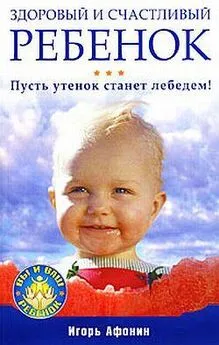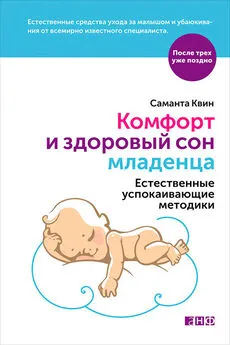Марк Вайсблут - Здоровый сон – счастливый ребенок
- Название:Здоровый сон – счастливый ребенок
- Автор:
- Жанр:
- Издательство:Array Литагент «Альпина»
- Год:2014
- Город:Москва
- ISBN:978-5-9614-3583-2
- Рейтинг:
- Избранное:Добавить в избранное
-
Отзывы:
-
Ваша оценка:
Марк Вайсблут - Здоровый сон – счастливый ребенок краткое содержание
Здоровый сон – счастливый ребенок - читать онлайн бесплатно ознакомительный отрывок
Интервал:
Закладка:
Rosenfeld, A. A., Wenegrant, A. O., Haavik, D. K., Wenegrant, B. C., and Smith, C. R. (1982). Sleeping patterns in uppermiddle-class families when the child awakens ill or frightened. Archive of General Psychiatry, 39, 943–947.
Твердая пища и режим питания
Beal, V. A. (1964). Termination of night feeding in infancy. Journal of Pediatrics, 75, 690–692.
Deisher, R. W., and Goers, S. S. (1954). A study of early and later introduction of solids into the infant diet. Journal of Pediatrics, 45, 191–199.
Grunwaldt, E., Bates, T., and Guthrie, D. (1960). The onset of sleeping through the night in infancy: Relation to introduction of solid food in the diet, birth weight and position in the family. Pediatrics, 26, 667–668.
Jones, N. B., Brown, M. F., and MacDonald, L. (1978). The association between perinatal factors and later night waking. Developmental Medicine and Child Neurology, 20, 427–434.
Lavie, P., Kripke, D. F., Hiatt, J. F., and Harrison, J. (1978). Gastric rhythms during sleep. Behavioral Biology, 23, 526–630.
Parmelee, A. H., Wenner, W. H., and Schulz, W. R. (1964). Infant sleep patterns from birth to 16 weeks of age. Journal of Pediatrics, 65, 576–582.
Robertson, P. M. (1974). Solids and ‘sleeping through’. British Medical Journal, 1, 200.
Salzarulo, P., Fagioli, I., Salomon, F., and Riccour, C. (1979). Alimentation continué et rhythmic veille-sommeil chez l’enfant. (Continuous feeding and the waking-sleeping rhythm in children.) Archives Françaises de Pédiatrie (Suppl.), 36, 26–32.
Schultz, H., Salzarulo, P., Fagioli, I., and Massetani, R. (1983). REM latency: Development in the first year of life. Electroencephalography and Clinical Neurophysiology, 56, 316–322.
Schulz, H., Massetani, R., Fagioli, I., and Salzarulo, P. (1985). Spontaneous awakenings from sleep in infants. Electroencephalography and Clinical Neurophysiology, 61, 267–271.
Wright, P., MacLeod, M. A., and Cooper, M. J. (1983). Waking at night: The effect of early feeding experience. Child Care Health Development, 9, 309–319.
Преимущества здорового сна: режим, мышление, обучение и успеваемость в школе
Anders, T. F., Keener, M. A., and Kraemer, H. (1985). Sleep-wake state organisation, neonatal assessment and development in premature infants during the first year of life: Part II. Sleep, 8, 193–206.
Bonnet, M. H. (1985). Effect of sleep disruption on sleep, performance, and mood. Sleep, 8, 11–19.
Busby, K., and Pikik, R. T. (1983). Sleep patterns in children of superior intelligence. Journal of Child Psychology and Psychiatry, 24, 587–600.
Dahl, R. E., Pelhan, W. E., and Wierson, M. (1991). The role of sleep disturbances in attention deficit disorder symptoms: A case study. Journal of Pediatric Psychology, 16, 229–239.
Deneberg, V. H., and Thoman, E. B. (1981). Evidence for a functional role for active (REM) sleep in infancy. Sleep, 4, 185–191.
Dunst, C. J., and Lingerfelt, B. (1985). Maternal ratings of temperament and operant learning in two– to three-month-old infants. Child Development, 56, 555–563.
Fibiger, W., Singer, G., Miller, A. J., Armstrong, S., and Datar, M. (1984). Cortisol and catecholamine changes as functions of time-of-day and self-reported mood. Neuroscience Biobehavioural Reviews, 8, 523–530.
Hayasaki, Y. (1927). On the sleeping hours at school, children of 6 to 20 years. Psychological Abstracts, 1, 439.
Johs, M. W., Gay, T. J. A., Masterton, J. P., and Bruce, D. W. (1971). Relationship between sleep habits, adrenocortical activity and personality. Psychosomatic Medicine, 33 , 499–508.
Matheny, A. D., and Dolan, A. B. (1974). Childhood sleep characteristics and reading achievement. JSAS Catalog of Selected Documents in Psychology, 4, 76.
Minde, K., Faucon, A., and Falkner, S. (1994). Sleep problems in toddlers: Effects of treatment on their daytime behaviour. Journal of the American Academy of Child & Adolescent Psychiatry, 33, 1114–1121.
Terman, L. M. (1925). Genetic studies of genius: Vol. 1. Mental and physical traits of a thousand gifted children. Palo Alto: Stanford University Press.
Weissbluth, M. (1981). Sleep duration and infant temperament. Journal of Pediatrics, 99, 817–819.
Weissbluth, M. (1984). Sleep duration, temperament, and Conners’ ratings of 3-year-old children. Journal of Developmental and Behavioral Pediatrics, 5, 120–123.
Weissbluth, M. (1985). How sleep affects school performance. Gifted Children Monthly, 6 , 14–15.
Глава 3. Нарушения сна и борьба с ними
Настроение и активность
Beltramini, A. U., and Hertzog, M. E. (1983). Sleep and bedtime behaviour in preschool-aged children. Pediatrics, 71, 153–158.
Dement, W. C., and Carskadon, M. A. (1982). Current perspectives on daytime sleepiness: The issues. Sleep, 5 (Suppl. 2), S56 – S66.
Dixon, K. N., Monroe, L. J., and Jakim, S. (1981). Insomniac children. Sleep, 4, 313–318.
Fibiger, W., Singer, G., Miller, A. J., Armstrong, S., and Datar, M. (1984). Cortisol and catecholamine changes as functions of time-of-day and self-reported mood. Neuroscience Biobehavioural Reviews, 8, 523–530.
Gaillard, J. M. (1985). Neurochemical regulation of the states of alertness. Annals of Clinical Research, 17, 175–184.
Gunner, M. R., Malone, S., Vance, G., and Fisch, R. O. (1985). Coping with aversive stimulation in the neonatal period: Quiet sleep and plasma cortisol levels during recovery from circumcision. Child Development, 56, 824–834.
Harrison, G. A. (1985). Stress, catecholamines, and sleep. Aviation, Space and Environmental Medicine, 56, 651–653.
Hauri, P., and Olmstead, E. (1980). Childhood-onset insomnia. Sleep, 3, 59–65.
Hicks, R. A., and Pellegrini, R. J. (1977). Anxiety levels of short and long sleepers. Psychological Reports, 41, 569–570.
Johs, M. W., Gay, T. J. A., Masterton, J. P., and Bruce, D. W. (1971). Relationship between sleep habits, adrenocortical activity and personality. Psychosomatic Medicine, 33 , 499–508.
Kales, A., Bixler, E. O., Vela-Bueno, A., Cadieux, R. J., Soldatos, C. R., and Kales, J. D. (1984). Biopsychobehavioural correlates of insomnia: Part III. Polygraphic findings of sleep difficulty and their relationship to psychopathology. International Journal of Neuroscience, 23, 43–56.
Lucey, D. R., Hauri, P., and Snyder, M. L. (1981). The wakeful ‘Type A’ student. International Journal of Psychosomatic Research, 101, 333–337.
Price, V. A., Coates, T. J., Thoresen, C. E., and Grinstead, O. A. (1978). Prevalence and correlates of poor sleep among adolescents. American Journal of Diseases of Children, 132, 583–586.
Simonds, J. F., and Parraga, H. (1982). Prevalence of sleep disorders and sleep behaviours in children and adolescents. Journal of the American Academy of Child Psychiatry, 4, 383–388.
Sundell, C. E. (1922). Sleeplessness in infants. Practitioner, 109, 89–92.
Tan, T. L., Kales, J. D., Kales, A., Soldatos, C. R., and Bixler, E. O. (1984). Biopsychobehavioural correlates of insomnia: Part IV. Diagnosis based on DSM III. American Journal of Psychiatry, 141, 357–362.
Чрезмерная сонливостьв дневное время
Hoddes, E., Zarcone, V., Smythe, H., Phillips, R., and Dement, W. C. (1973). Quantification of sleepiness: A new approach. Psychophysiology, 10, 431–436.
Stepanski, E., Lamphere, J., Badia, P., Zorick, F., and Roth, T. (1984). Sleep fragmentation and daytime sleepiness. Sleep, 7, 18–26.
Ночные пробуждения, трудности с засыпанием
Coulter, D. L., and Allen, R. J. (1982). Benign neonatal sleep myoclonus. Archives of Neurology, 39, 191–192. Earls, F. (1980). Prevalence of behaviour problems in 3-year-old children. Archives of General Psychiatry, 37, 1153–1157.
Fukumoto, M., Muchozuki, N., Tekeishi, M., Nomura, Y., and Segawa, M. (1981). Studies of body movements during night sleep in infancy. Brain and Development, 3, 37–43.
Karacan, I., Wolff, S. M., Williams, R. L., Hurscl, C. J., and Webb, W. B. (1968). The effects of fever on sleep and dream patterns. Psychosomatics, 9, 331–339.
Oster, J., and Nelson, A. (1974). Growing pains: A clinical investigation of a school problem. Acta Paediatrica Scandinavia, 61, 329–334.
Radbill, S. X. (1965). Teething in fact and fancy. Bulletin of the History of Medicine, 39, 339–345.
Richman, N. (1981). A community survey of characteristics of 1– to 2-year-olds with sleep disruption. American Academy of Child Psychiatry, 20, 281–291.
Tasanen, A. (1969). General and local effects of the eruption of deciduous teeth. Annales de Paediatrac Fenniae, 14 (Suppl. 29).
Weissbluth, M. (1982). Modification of sleep schedule with reduction of night waking: A case report. Sleep, 5, 262–266.
Weissbluth, M., Christoffel, K. K., and Davis, A. T. (1984). Treatment of infantile colic with dicyclomine hydrochloride. Journal of Pediatrics, 104, 951–955.
Weissbluth, M., Davis, A. T., and Poncher, J. (1984). Night waking in 4– to 8-month-old infants. Journal of Pediatrics, 104, 477–480.
Глава 4. Сон, чрезмерная нервозность / коликии темперамент
Aldrich, C. A., Sung, C., and Knop, C. (1945). The crying of newly born babies: Part II. The individual phase. Journal of Pediatrics, 27, 89–96.
Barr, R. G. (1989). Feeding and temperament as determinants of early infant crying / fussing behaviour. Pediatrics, 84, 14–521.
Bates, J. E., Viken, R. J., Alexander, D. B., Beyers, J., and Stockton, S. (2002). Sleep and adjustment in preschool children: Sleep diary reports by mothers relate to behavior reports by teachers. Child Development, 73, 62–74.
Blum, N. J., Taubman, B., Tretina, L., and Heyward, R. Y. (2002). Maternal ratings of infant intensity and distractibility. Relationship with crying during the second month of life. Archives Pediatrics and Adolescent Medicine, 156, 286–290.
Boon, W. H. (1982). The crying baby. Journal of the Singapore Paediatric Society, 24, 145–147.
Brazelton, T. B. (1962). Crying in infancy. Pediatrics, 29, 579–588.
Breslow, L. (1957). A clinical approach to infantile colic: A review of 90 cases. Journal of Pediatrics, 50, 196–206.
Canivet, C., Jakobsson, I., and Hagander, B. (2000). Infantile colic. Follow-up at four years of age: Still more ‘emotional’. Acta Paediat, 89, 13–17.
Carey, W. B. (1972). Clinical application of infant temperament measurements. Journal of Pediatrics, 81, 823–828.
Carey, W. B. (1985). Temperament and increased weight gain in infants. Journal of Developmental and Behavioral Pediatrics, 3, 128–131.
Carey, W. B., and McDevitt, S. C. (1978). Revision of the infant temperament questionnaire. Pediatrics, 61, 735–739.
Читать дальшеИнтервал:
Закладка:








![Андрей Курпатов - Счастливый ребенок. Универсальные правила [(дополненное)]](/books/1083759/andrej-kurpatov-schastlivyj-rebenok-universalnye.webp)

